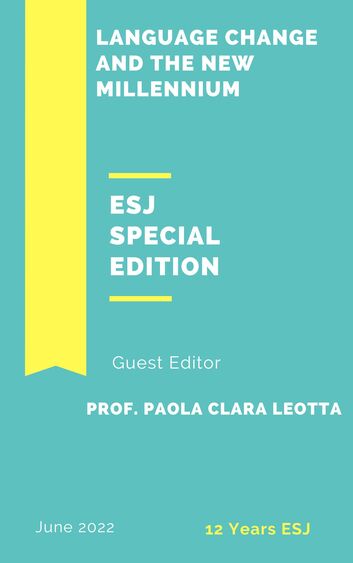The Role of the Student in the Literary Translation Classroom: A Pedagogical Approach Towards a New Learning Perspective
Abstract
Despite the full involvement of students in their learning process, the translation classroom still faces challenges associated with the implementation of traditional teaching schemes. Ideally, students should be invited to reflect and exchange perspectives that help them internalize the different stages that take place during the stages of the translation process. Among these, intuition and deduction come into play and lead to the creation of a habit through induction that allows the students to face the translation problems arising from the text in a satisfactory manner, thus contributing to the development of their translation competence. This proposal is designed within a framework of active learning in which students stop being spectators in the classroom to become the protagonist of their own learning process by being continuously exposed to situations that demand higher-order intellectual operations. The methodology employed in class will take place in three different stages: comprehension of the source text, interlingual translation and an individual assessment of the target text. This three-fold learning strategy favors an active attitude in students and compels them to perform activities effectively. We believe that this proposal will help us achieve our main objective, which is to help our students delve into the complexities and problems associated with the field of literary translation while fostering the foundations of collaborative learning in the classroom.
Downloads
Metrics
PlumX Statistics
References
2. Chiaro, D. (2010). Translation and humour, humour and hranslation. In D. Chiaro (Ed.), Translation, humour and literature: translation and humour (pp. 1–30). Bloomsbury Academic.
3. Cook-Sather, A. (2007) Resisting the impositional potential of student voice work: Lessons for liberatory educational research from poststructuralist feminist critiques of critical pedagogy, Discourse: studies in the cultural politics of education, 28(2), 389-403. https://doi.org/10.1080/01596300701458962
4. Delisle, J. Hannelore Lee-Jahnke, and Monique C. Cormier (1999). eds. Terminologie de la traduction: translation terminology. terminología de la traducción. Terminologie der Übersetzung. Vol. 1. John Benjamins Publishing.
5. Dillenbourg Pierre, Michael J. Baker, Agnès Blaye, Claire O’Malley (1995). The evolution of research on collaborative learning. In Spada, E. and Reiman, P. Learning (Eds.), Humans and Machine: Towards an interdisciplinary learning science, (pp. 189-211), Elsevier.
6. Hadar, L. L. and Yotam Hotam. (2012). Pedagogy in practice: school pedagogy from students’ perspectives. Research papers in education 27(2), 187-208.
7. Hickey, L. (1998). The pragmatics of translation. Multilingual Matters.
8. Holz-Mänttäri, J. (1984). Translatorisches handeln: theorie und methode. Suomalainen Tiedeakatemia.
9. House, J. (2017). Translation: The basics. Routledge.
10. Hurtado Albir, A (2011). Traducción y traductología. Cátedra.
11. Kiraly, D. (1995). Pathways to translation: pedagogy and process. Kent State University Press.
12. Krings, Hans P. (1986) Translation problems and translation strategies of advanced German learners of French (L2), Interlingual and intercultural communication, 263-276.
13. Ladmiral, J.R. (1977) La traduction dans le cader de l’institution pédagogique. Die Neueren Sprachen 76, 489-516.
14. Robinson, D (2003). Becoming a translator: an accelerated course. Routledge
Copyright (c) 2022 Alba Fernández-Alonso

This work is licensed under a Creative Commons Attribution-NonCommercial-NoDerivatives 4.0 International License.








